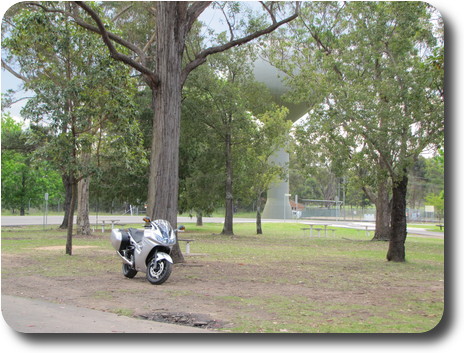
There is a large recreation/picnic area in the public area of the dam, and this is where I stopped to have lunch and wander around a bit before continuing to the visitor centre.
Last time I visited the dam, the gravel barrier on the right did not exist. It was rock, and the dam wall ended about where the blue crane is located. The reason is to prevent water flowing over the top of the dam wall during uncommon, but not impossibly high, inflow rates to the dam. Such an event could lead to failure of the dam wall by underming the rock of the riverbed in front of the dam.
So, to bring the dam up to current safety/engineeing standards, an auxiliary spillway was constructed - that's it leading away to the right. The gravel wall is to hold water until just below the top of the wall. Any higher and the water will start flowing over the gravel, and wash it away, allowing the excess water to bypass the dam wall.
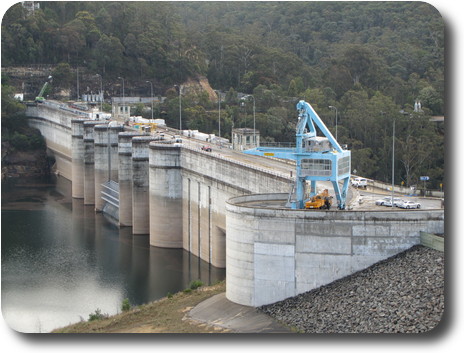 A closer view of the rear side of the dam wall. Note the low water level!
As part of the above safety improvements, the wall height was increased - I would
guess along the dark line mid way between the top of the brown area and the
very top of the wall.
A closer view of the rear side of the dam wall. Note the low water level!
As part of the above safety improvements, the wall height was increased - I would
guess along the dark line mid way between the top of the brown area and the
very top of the wall.
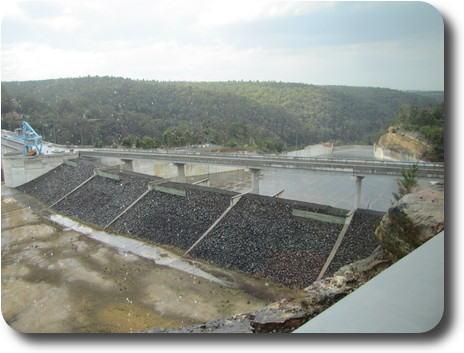 This shows the emergency spillway, disappearing off into the distance. It's not
possible to see the far end - it might be quite a spectacular waterfall if
if it is ever in use!
This shows the emergency spillway, disappearing off into the distance. It's not
possible to see the far end - it might be quite a spectacular waterfall if
if it is ever in use!
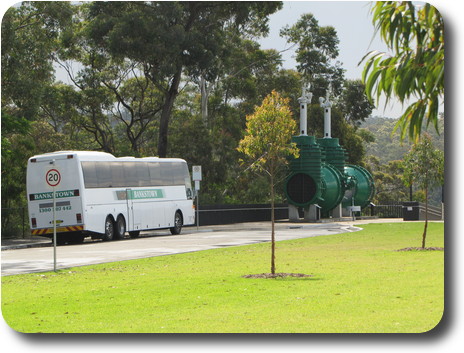 The two green elements on the right are retired valves used to control the
water supply from the dam into Sydney's water reticulation system. They are big,
as seen by comparison with this tour bus!
The two green elements on the right are retired valves used to control the
water supply from the dam into Sydney's water reticulation system. They are big,
as seen by comparison with this tour bus!
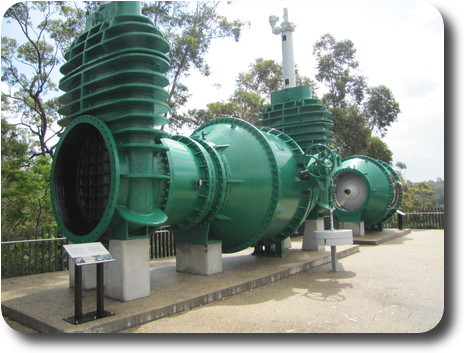 The
two valves.
There were 4 sets of these installed during construction in 1958.
They were replaced by newer valves between 2004 and 2006.
The
two valves.
There were 4 sets of these installed during construction in 1958.
They were replaced by newer valves between 2004 and 2006.
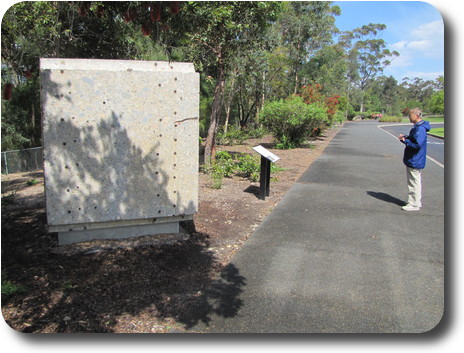 This concrete block was
cut from the upstream face
of the dam in 2006.
This allowed access to an additional 170 gigalitres of water in the dam.
This water requires pumping over the hill to reach Sydney, so the old pumping
station (used before the water level was high enough for gravity feed) was
refurbished. It provides an additional 5 months of water supply to Sydney.
This concrete block was
cut from the upstream face
of the dam in 2006.
This allowed access to an additional 170 gigalitres of water in the dam.
This water requires pumping over the hill to reach Sydney, so the old pumping
station (used before the water level was high enough for gravity feed) was
refurbished. It provides an additional 5 months of water supply to Sydney.
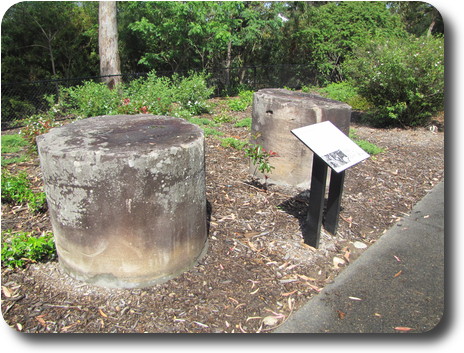 These two cores were part of the
investigation
to determine the actual site of the dam, starting in 1942. The initial site
was somewhat downstream from the current location, but was found to be unsuitable.
These two cores were part of the
investigation
to determine the actual site of the dam, starting in 1942. The initial site
was somewhat downstream from the current location, but was found to be unsuitable.